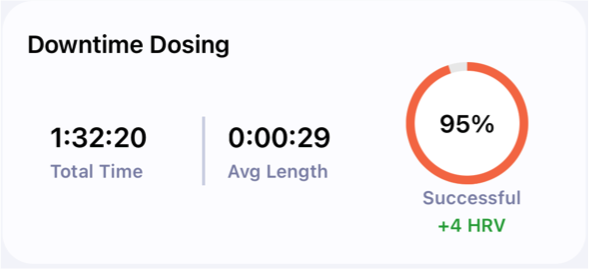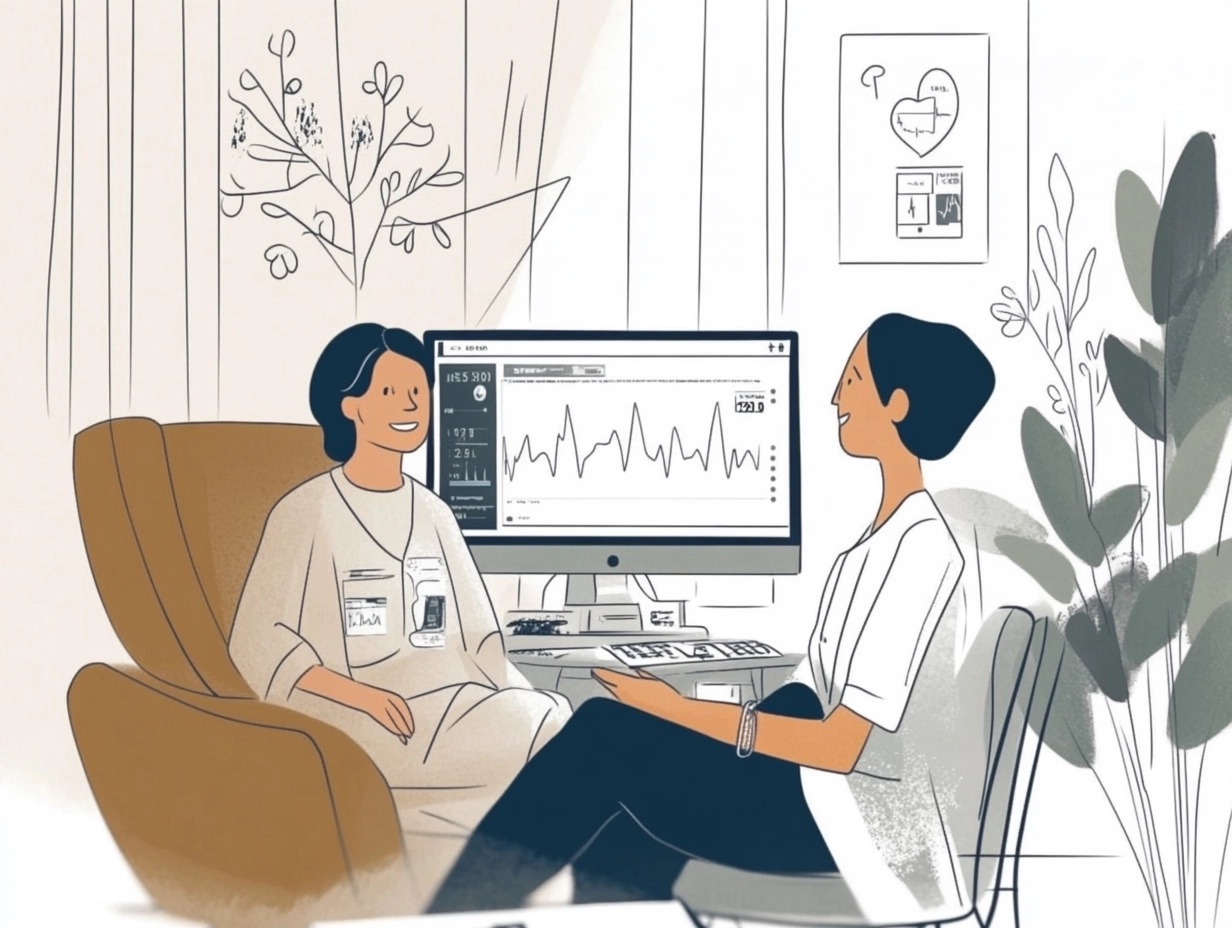Sven shares how he’s learned to approach stressful situations more peacefully and mindfully with the help of HRV tracking and training with his Lief Smart Patch
Tell me about yourself.
Several years ago, I went through a particularly stressful period in my professional career. At the time my coping strategy was to numb myself playing video games. One day I realized that this strategy doesn’t work, so I revisited my interest in optimizing, which I’ve had since I was a teenager when I tuned cheap computer parts to achieve much higher performance. I made the goal to improve myself in order to be better able to cope with life’s stressors, rather than just trying to avoid them.
The beginning of this year was also a particularly stressful period for me because I was doing the work of two people for several months since my company was short staffed. On some days I was overwhelmed by so many tasks that I could barely manage. I managed to develop a productive working style, but this time period was still so stressful that I developed a skin rash (Pityriasis rosea). As a result of this experience, I became very interested in stress management. I completed the terrific Mindfulness-Based Stress Management course by Palouse Mindfulness, which I’d highly recommend!
How did you become interested in tracking your heart rate variability (HRV)?
Through my research on stress management and mindfulness, I learned about HRV as a biomarker of stress. I wanted to monitor my HRV in order to better understand what situations increased my stress level, and what I could do to deliberately decrease it.
How did you discover the Lief Smart Patch?
I get inspiration from other biohackers about ideas to experiment with. At first I tried to use the Polar H10 heart rate monitor chest strap and mobile app to monitor my HRV. However, there was no history of my real time HRV measurements, and no notification of when my HRV dropped below a certain level. Having access to these features was a priority for me.
One day I was reading a blog post on Kenkohacks from a fellow biohacker, Eeva. She wrote about her experience with her Lief and said it was an “indispensable part of her lifestyle”. Hearing this from a reliable source made me very interested in the Lief device, especially given that it offered the capabilities that I wanted, so I ordered one for myself.
How has tracking your HRV with Lief helped you?
I now understand much better which factors of daily life make my HRV go up versus down. This helped me better understand which situations and habits I should avoid, and which ones I should try to incorporate into my life more.
Some factors that impacted my HRV were obvious, but some were quite surprising to me. For example, while working on my annual tax declaration, my HRV increased significantly. I believe it’s because I entered a flow state while I focused on the process. Even though filing taxes is a boring and unsexy task, my HRV suddenly went into the blue zone (a.k.a. my highest HRV level!) and stayed there. I was pleasantly surprised!
On the other end of the spectrum, I noticed that my HRV dropped significantly during and after a meal. My nutrition is extremely healthy, but I consume about 3,300 calories per day. The digestion of this calorie-dense food makes my heart rate rise and my HRV dip. In the beginning I thought that I might be stressed on some level, but now I recognize that this is a normal biological process.
What do you value most about tracking your HRV continuously throughout the day?
In the past, I’ve been so mired in my own stress that I don’t have the presence of mind to recognize that I’m stressed. Since the Lief device tracks my HRV continuously and provides real time feedback, I’m able to step out of my stress spiral. My Lief reminds me to take some deep breaths to help me re-center and distance myself from whatever challenging emotions I’m experiencing.
What do you do with your HRV information?
In the beginning I maintained a spreadsheet where I tracked events that increased or lowered my HRV. I also took notes about the context I was in. After some time, I was able to notice patterns about which events caused my HRV to drop, and which ones helped raise my HRV.
What do you value most about the Downtime practice?
I like that I can follow the vibration to pace my exhale, and to sync my breath with my descending HRV wave. This visual concept is really clever and intuitive for me to follow.
How did Lief help you with your mental and physical health?
The Lief device helps me train my nervous system to be more balanced. In the beginning my downtime practice (a.k.a. HRV biofeedback training) success rate was 85%, and the average time it took me to increase my HRV enough to turn off my autodose was 41 seconds.
Now my success rate is 95% and it only takes me an average of 29 seconds to increase my HRV past my training threshold, which my Lief coach confirmed is very fast. It’s empowering to see this progress over time!

How do you like to use your Lief on any given day?
Towards the end of my morning routine, after taking a shower, I put on my Lief. I noticed that the ECG stickers work best on clean skin. I keep my Lief on until the beginning of my evening routine when I take a hot bath, which helps improve my sleep.
I charge my Lief overnight outside my bedroom to make sure my sleep is not affected by EMF, and to ensure that it’s fully charged and ready to go the next morning.
In the beginning I kept the lower and upper boundaries for my autodose training thresholds constant. On some days this led to too many auto-doses, while on other days I didn’t reach my daily practice goal. Nowadays, I change the threshold dynamically over the day to make sure I get enough auto-doses, but not an overwhelming amount.
I personally don’t initiate the Downtime practice manually, but I do mute the autodosing manually in some cases. For example, I mute my autodoses during meals because I want to enjoy my meal and not be interrupted. I also mute my autodoses if I’m talking with someone since I wouldn’t want to do a breathing exercise in this situation.
What advice would you give to others who are just getting started with their Lief?
I like to keep the Lief App open on my desk in my home office. This gives me useful real time insights into how my actions affect my HRV. Another benefit of keeping my Lief app open is that I see when an auto-dose starts, even before I feel the vibration of the Lief device. This allows me to take a deep breath before the vibration kicks in. Furthermore I’m able to watch my HRV wave during my practice sessions.
I highly recommend using the physiological sigh to increase HRV quickly. I learned this tool from Andrew Huberman’s excellent podcast. He recommends doing a double inhale instead of a single one. This tool was a game changer for me.
Finally, I recommend creating a spreadsheet and tracking the events that impacted your HRV. Over time, you will recognize patterns that provide valuable insights into events and actions that are helpful or not helpful with regards to your HRV.
Anything else you’d like to share?
I sincerely hope that I’ll be able to use my Lief for a long time, as it’s also become an indispensable part of my lifestyle! In general, I’m very interested in self-improvement. For others who are also interested in this, I recommend Optimize, an online resource that offers classes, a coaching program, and other learning materials on self development. They offer a summary of the best ideas from some of the top self-improvement books in a 6-page PDF. I felt this was a great, fast way for me to get ideas and tools on how to live optimally.
I’m now playfully exploring offering coaching to other people in order to share my wisdom and experience with them, so that they can improve their lives too. The first steps in this direction were building my Habit Academy website and creating my Instagram channel. I encourage people to check out my website and social media profile if they want to get ideas on how to achieve better mental and physical health!






Leave a Reply
You must be logged in to post a comment.